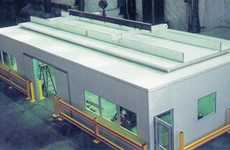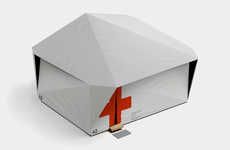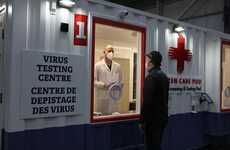
Architect Students Designed This Portable Ebola Clinic
Alyson Wyers — October 9, 2014 — Art & Design
References: one.arch.tamu.edu & fastcoexist
As the ebola virus continues to wreak havoc in west Africa, students at Texas A & M University designed an ebola clinic that could fit inside a standard shipping container. The first American case of the disease recently ended in a fatality in Dallas, making this pressing problem all the more relevant.
Even though ebola is largely manageable when appropriate healthcare systems are in place, it is still something many in the United States are worried about. This portable ebola clinic shows how inexpensive, modular and easy to assemble structures can have an enormous impact in addressing this pandemic. The key is isolating patients from the general public, as is the case with many similar diseases. Overcrowding of current facilities is also an issue influencing this design.
Even though ebola is largely manageable when appropriate healthcare systems are in place, it is still something many in the United States are worried about. This portable ebola clinic shows how inexpensive, modular and easy to assemble structures can have an enormous impact in addressing this pandemic. The key is isolating patients from the general public, as is the case with many similar diseases. Overcrowding of current facilities is also an issue influencing this design.
Trend Themes
1. Modular Medical Facilities - Creating inexpensive, modular and easy to assemble medical facilities to address pandemics.
2. Portable Pandemic-containing Units - Designing portable and self-contained units to isolate patients from the general public during pandemics.
3. Shipping Container Clinics - Repurposing shipping containers to construct medical clinics during pandemics as a cost-effective solution.
Industry Implications
1. Construction - Exploring cost-effective and modular construction materials and methods to create portable medical facilities during pandemics.
2. Healthcare - Developing isolated medical facilities for pandemic response to ease strain on hospital facilities.
3. Logistics - Creating efficient logistics methods and supply chains to transport and assemble portable medical facilities during pandemics.
1.7
Score
Popularity
Activity
Freshness























